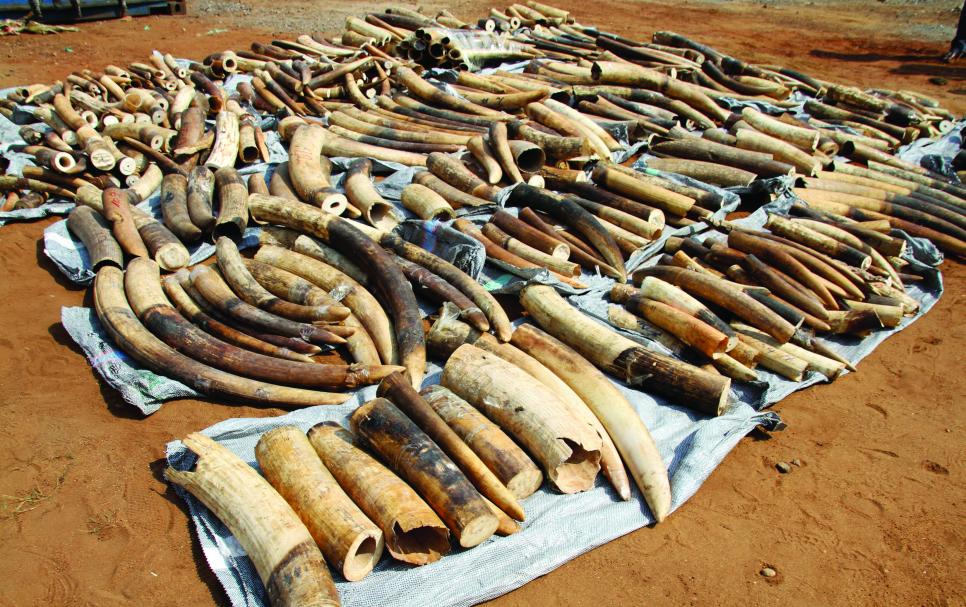Nam to ask EU over N$160m ivory

By Kaipaherue Kandjii
Namibia has sought permission from European nations in its bid to legally sell a stockpile of elephant ivory worth N$166 million, ahead of a crucial vote at the 20th Conference of the Parties (CoP20) to the Convention on International Trade in Endangered Species (CITES).
The conference, scheduled for 24 November to 05 December 2025, in Samarkand, Uzbekistan, will bring global attention to the debate over ivory trade, conservation, and international cooperation.
The proposal is a plea to European countries, many of which have historically opposed any form of ivory trade, to reconsider their stance in light of Namibia’s proven success in reducing poaching and managing wildlife sustainably.
Namibia’s ivory stockpile totals 92,386.52 kilograms, collected primarily through natural elephant deaths and population control amounting to 44,840.78 kg, law enforcement seizures of 46,117.79 kg and 1,427.52 kg of undetermined origin. According Ndeshipanda Hamunyela, spokesperson at the Ministry of Environment, Forestry and Tourism (MEFT), the ivory originates exclusively from within national borders and is supported by comprehensive tracking systems.
“
We urge our European partners to recognize Namibia’s achievements in wildlife protection. This proposal is not about commercial exploitation. It is about rewarding responsible conservation,” said Hamunyela.
“Namibia does not believe in the destruction of its natural resources, which could generate much-needed revenue for wildlife conservation and for communities living alongside wildlife. The proposal seeks permission to allow Namibia to trade in registered stocks of raw ivory (whole tusks and pieces) of Namibian origin, owned by the Government of the Republic of Namibia, for commercial purposes with trading partners that have been verified by the CITES Secretariat as having sufficient national legislation and domestic trade controls.”
Furthermore, over the past few years, Namibia has seen a sharp decline in elephant poaching, a success attributed to enhanced surveillance, strong anti-poaching units and deep-rooted community involvement. This downward trend strengthens Namibia’s argument for regulated trade as a model of sustainable conservation, rather than a loophole for exploitation.
Meanwhile, European conservationists warn that any legal ivory trade could rekindle global demand and fuel the black market, however, Namibia contends that burning ivory has failed to deter poaching elsewhere and instead wastes a resource that could finance conservation and uplift rural communities living alongside wildlife.
Hamunyela retorted: “Destroying ivory does not stop poachers. It just removes potential funding for the very programs that keep them at bay.”
Namibia's approach includes tightly controlled sales to CITES-approved partners who meet international ethical and legal standards.
If granted approval, Namibia would become one of the first African countries in over a decade permitted to conduct legal ivory trade under strict monitoring conditions.
In addition to elephant ivory, Namibia is also safeguarding a massive rhino horn stockpile, now valued at N$1 billion, up from just N$125 million in 2017, another indicator of successful conservation enforcement.
Zimbabwe, Zambia, Botswana, Angola and now Namibia - have been pushing for the lifting of a ban on ivory sales imposed by CITES.
Despite the ban, CITES in 1999 and 2008 allowed some one-time ivory sales by countries with healthy and well managed elephant populations, such as Botswana, Namibia, South Africa and Zimbabwe, with proceeds going to conservation programmes.
KAZA states, who hold a combined 227,000 elephants - more than half the total African population – and yet CITES disallows ivory and elephant sales which has been flagged as unjust.
- 98 views










Comments